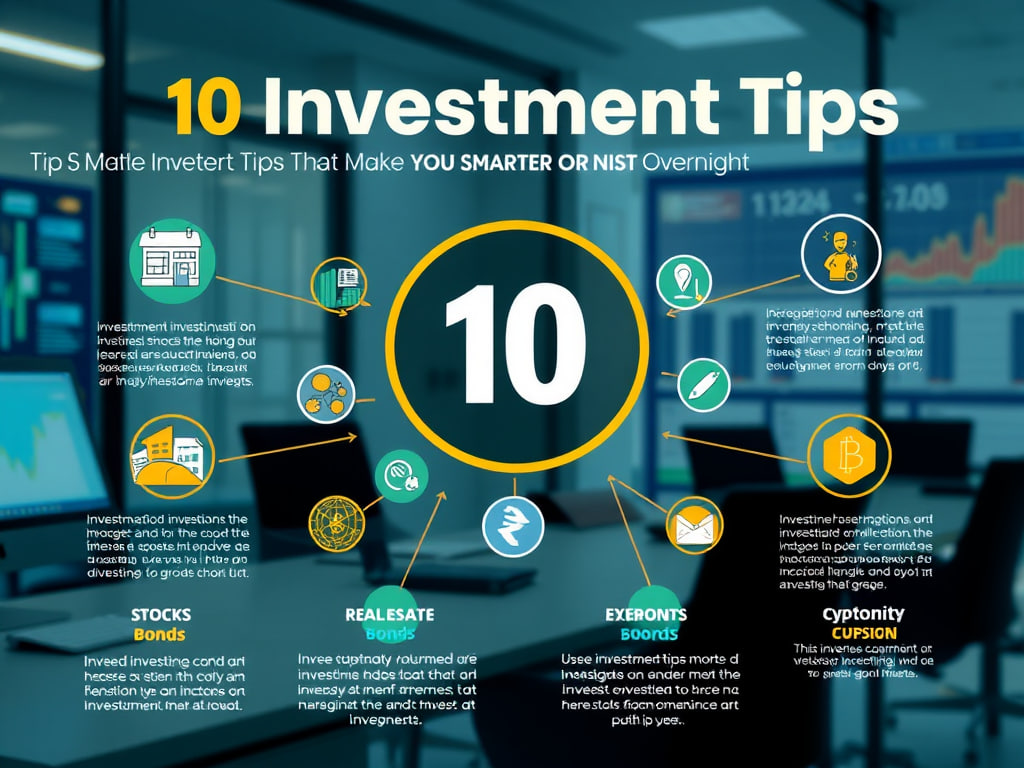Investing can seem daunting, especially with the vast array of options and strategies available. However, by focusing on key principles and effective practices, you can quickly improve your investment skills and make more informed decisions. Here are ten investment tips that will make you smarter overnight, empowering you to optimize your portfolio and achieve your financial objectives.
1. Define Clear Financial Goals
Before diving into the investment world, it’s crucial to have a clear understanding of your financial goals. Whether saving for retirement, buying a home, or funding education, knowing your objectives will guide your investment strategy and help you stay focused.
Actionable Tip:
- Set Specific, Measurable Goals: Break down your financial objectives into specific, achievable targets with timelines and dollar amounts.
2. Diversify Your Portfolio
Diversification is a key strategy for managing risk and enhancing returns. By spreading investments across various asset classes, sectors, and geographic regions, you can reduce the impact of poor performance in any single area.
Actionable Tip:
- Use Asset Allocation Models: Employ asset allocation strategies that align with your risk tolerance and investment horizon to ensure a balanced portfolio.
3. Understand Risk and Reward
Every investment carries some level of risk. Understanding the relationship between risk and reward will help you make informed decisions and choose investments that align with your risk tolerance.
Actionable Tip:
- Assess Risk Tolerance: Determine your comfort level with risk by considering factors such as age, financial situation, and investment experience.
4. Stay Informed and Educated
The investment landscape is constantly evolving, making it essential to stay informed about market trends, economic developments, and emerging opportunities. Continuous education will enhance your investment knowledge and decision-making capabilities.
Actionable Tip:
- Engage with Reliable Sources: Subscribe to reputable financial news outlets, attend webinars, and read books by investment experts to stay up-to-date.
5. Practice Patience and Discipline
Investing is a long-term endeavor that requires patience and discipline. Avoid making impulsive decisions based on short-term market fluctuations or emotions.
Actionable Tip:
- Stick to Your Plan: Develop a well-thought-out investment plan and adhere to it, even during market volatility, to achieve your long-term goals.
6. Leverage Technology and Tools
Modern technology offers a range of tools and platforms that can simplify the investment process and provide valuable insights. From robo-advisors to investment apps, leveraging technology can enhance your investment strategy.
Actionable Tip:
- Explore Investment Platforms: Use platforms that offer portfolio tracking, analysis, and automated investment options to streamline your investment management.
7. Focus on Quality, Not Quantity
It’s easy to be tempted by the allure of high-risk, high-reward investments, but focusing on quality is essential for long-term success. Prioritize investments with strong fundamentals, stable performance, and growth potential.
Actionable Tip:
- Conduct Thorough Research: Evaluate companies or assets based on financial health, competitive advantage, and market position before investing.
8. Reinvest Dividends and Earnings
Reinvesting dividends and earnings can significantly enhance your portfolio’s growth through the power of compounding. This strategy allows you to maximize returns over time.
Actionable Tip:
- Set Up Automatic Reinvestment: Enroll in dividend reinvestment plans (DRIPs) to automatically reinvest dividends into additional shares.
9. Monitor and Review Your Portfolio
Regularly reviewing your portfolio ensures it remains aligned with your financial goals and risk tolerance. Monitoring performance and making necessary adjustments is crucial for long-term success.
Actionable Tip:
- Schedule Portfolio Reviews: Conduct periodic reviews, such as quarterly or annually, to assess performance and rebalance as needed.
10. Seek Professional Guidance
If you’re unsure about your investment strategy or need personalized advice, consulting with a financial advisor can provide valuable insights and help you make informed decisions.
Actionable Tip:
- Choose a Qualified Advisor: Look for advisors with relevant credentials, experience, and a fiduciary duty to act in your best interest.
Conclusion: Empowering Your Investment Journey
By adopting these ten investment tips, you can enhance your financial acumen and make smarter decisions that align with your goals. Remember, successful investing requires a combination of knowledge, discipline, and adaptability. As you implement these strategies, you’ll be better equipped to navigate the complexities of the investment landscape and achieve financial success.


